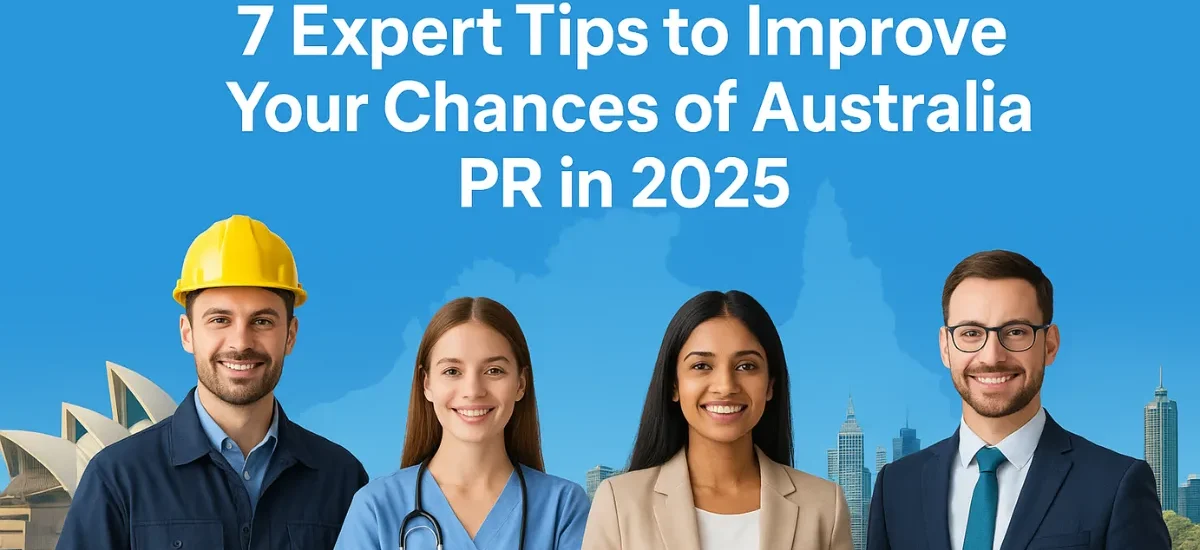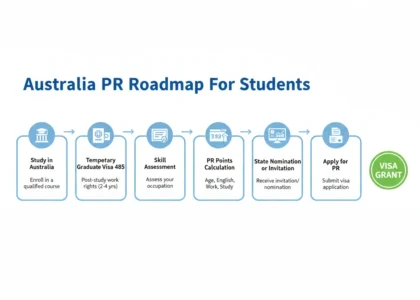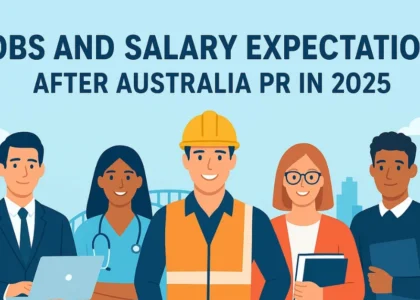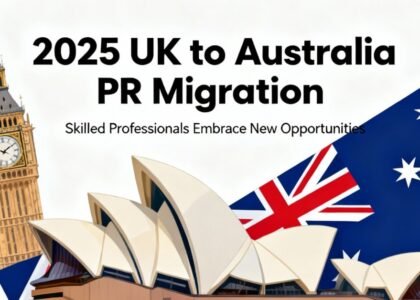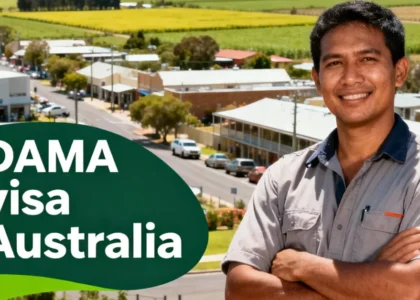7 Tips to Improve Your Chances of Getting Australia PR in 2025
Australia is one of the most popular destinations for skilled workers, students and families who want a better future. It is a popular choice because of its great lifestyle, good healthcare, job opportunities and quality education. Getting Australia PR in 2025 is very competitive because more people are applying and the government is focusing on skilled migrants who can support the economy. If you are planning to apply this year, it is essential to consult an Australia PR consultant. A minor mistake can lead to visa rejection. Therefore, we recommend consulting a MARA-registered agent. They carefully prepare your apllication to ensure a smooth and error-free visa process.
Here are 7 expert tips that can help improve your chance of getting an Australia PR visa in 2025.
1. Choose an Occupation in Demand
Your occupation plays a big role in your visa approval. The government updates the Skilled Occupation List (SOL) and Priority Migration Skilled Occupation List (PMSOL) according to Australia’s job market requirements.
In 2025, there is high demand in:
- Healthcare (nurses, aged care workers, doctors)
- Information Technology (cybersecurity, software engineers)
- Engineering and construction
- Education and teaching roles
- Trade jobs (plumbers, welders, electricians, mechanics)
2. Improve Your Points for Skilled Migration
The General Skilled Migration (GSM) program is a points-based system. You get points for age, English level, work experience, education and state nomination. In 2025, the cut-off scores are higher because of strong competition. You can Use Australia PR Points Calculator to Calculate your point and check if you are eligible or not.
Ways to increase your points:
- Apply before age 33 to get maximum points.
- Aim for Superior English (IELTS 8 or PTE 79+) to earn extra points.
- Get more work experience in your skilled occupation.
- Apply for state or regional sponsorship to receive 5–15 bonus points.
3. Explore Regional Pathways
Australia is encouraging skilled migrants to live in regional areas through visas like:
Subclass 491 (Skilled Work Regional Provisional Visa)
Subclass 494 (Skilled Employer Sponsored Regional Visa)
These visas can later lead to Australia PR (Subclass 191) if you meet the work and residence requirements.
4. Apply for State Nomination Programs
Australia’s states and territories run their own migration programs to meet local skill shortages. This is one of the best ways to boost your Australia PR visa chances in 2025. With state sponsorship, you get extra points (5–15) and priority in invitations. States prefer applicants who already studied, lived or worked locally or are willing to move to regional areas. This means that even if your occupation is not in very high demand nationally, you might still qualify for a state-nominated visa pathway to Australia PR.
- VIC & NSW: Focus on healthcare, IT, teaching and engineering.
- SA & TAS: Flexible for trades, nursing, agriculture and international graduates.
- WA & QLD: Demand in mining, construction, trades and healthcare.
- NT & ACT: Opportunities in hospitality, healthcare, education and public sector.
5. Gain Australian Study or Work Experience
Having local experience can boost and makes you a strong candidate for Australia PR. Many graduates who studied in Australia in priority fields like nursing, IT or engineering are given preference.
If you are finding it hard to meet the PR requirements directly, you could first consider studying in Australia or working on a temporary visa like the Subclass 482 Temporary Skill Shortage Visa. Gaining local experience adds value to your PR application.
6. Prepare Financially for Visa Costs
Applying for Australia PR visa in 2025 is an investment. You need to create a clear budget before lodging your visa and having financial stability not only helps you manage the process smoothly but also shows credibility if you are applying for employer-sponsored or contributory visas. The base application charge for skilled visas is higher this year and extra costs apply for partners and dependents. On top of this, you need to budget for:
- Skills assessment fees (varies by occupation)
- English test costs (IELTS, PTE or TOEFL)
- Medical examinations & police clearances
- Document translations and notary services
- Relocation expenses (flights, initial accommodation and living setup in Australia)
7. Get Professional Guidance
Immigration rules keep changing, and in 2025, new policies were introduced to fill skill shortages and support regional areas. Applying on your own without the right help can lead delays or even visa rejection. A MARA-registered agent is a licensed migration expert who is allowed by Australian law to give immigration advice. They can make your visa application stronger, lower the chance of rejection and help you go through the process smoothly and without mistakes
FAQs
With 75 points, your chance depends on demand for your occupation. ICT Sales roles are moderately competitive, so applying with state nomination (Subclass 190) or regional nomination (Subclass 491) can improve your chances.
Yes, nursing is in high demand. 80 points generally gives a strong chance, especially if you have Australian work experience or a state nomination. Invitations may come faster in states with nursing shortages.
Invitation timing varies by visa subclass and occupation. On average:
Subclass 189: 4–12 months
Subclass 190: 2–8 months with state nomination
Subclass 491: 3–9 months depending on regional demand
High-demand occupations added in 2025 include: healthcare, IT, engineering, trades, and teaching roles. Check the official Home Affairs Skilled Occupation List for accurate, updated details.
Incomplete or inconsistent documentation
Low English test score or expired results
Skills assessment mismatch with occupation
Not meeting state or regional nomination criteria
Missing medical or police clearance
Yes. You can apply for skilled migration while on a student visa, but you must meet points, skills assessment, and English requirements. Gaining work experience in Australia helps your score.
Yes, work experience on a Subclass 482 visa can help if you meet occupation and experience requirements. Certain employer-sponsored streams lead directly to PR.
Generally, applicants must be under 45 for skilled visas. Some exemptions may apply for employer-sponsored or certain regional pathways.
Yes. Completing a full-time Australian qualification in a relevant occupation or regional area can give extra points for skilled migration.
Most employer-sponsored visas require meeting the Temporary Skilled Migration Income Threshold (TSMIT), which is currently around AUD 53,900* per year (may vary by visa and occupation).

